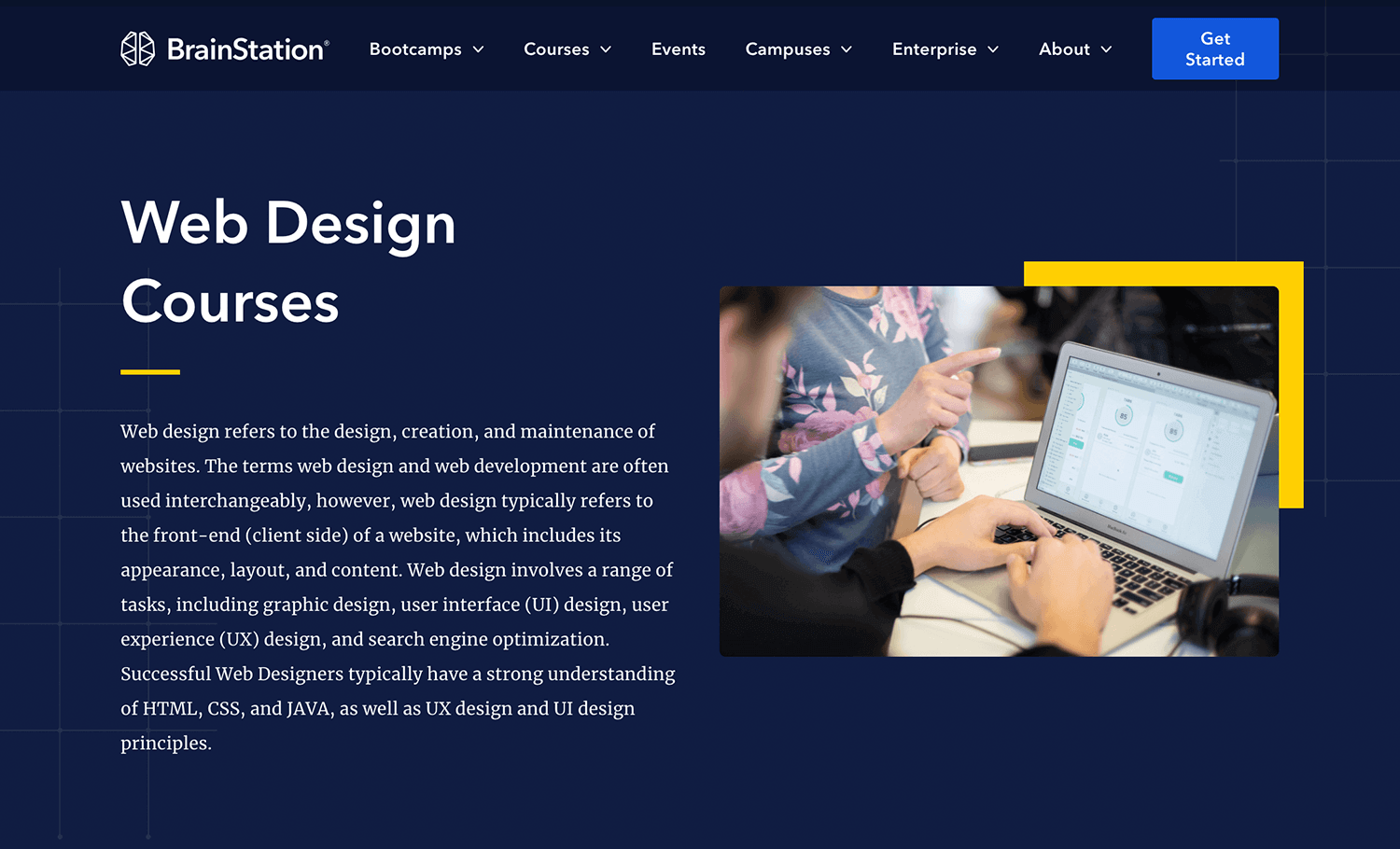Just How to Effectively Integrate Looks and Performance in Internet Layout
When designing a site, you require to strike a balance in between appearances and capability. It's not nearly looking great; your design should additionally serve an objective and overview individuals successfully. By concentrating on simplicity and instinctive navigation, you can produce an appealing experience. What elements absolutely enhance usability while maintaining aesthetic charm? Allow's discover the essential principles that can cause an unified blend of beauty and feature.
Comprehending the Significance of Visual Appeals and Functionality
When you make a website, understanding the equilibrium between visual appeals and performance is crucial for producing a reliable user experience. An aesthetically attractive site grabs interest, but it's the functionality that maintains individuals involved. Site visitors will quickly lose interest and leave.Consider your target audience and what attracts them in if your website looks excellent yet is hard to navigate. You wish to create a style that shows your brand name while making sure ease of use. Structured formats, intuitive navigation, and clear contact us to action can improve both visual appeals and capability.

Concepts of Effective Website Design
To create an effective internet style, you need to follow numerous crucial principles that boost both user experience and aesthetic appeal. First, prioritize simplicity; a tidy layout assists users browse quickly. Utilize a consistent color design and typography to maintain comprehensibility throughout your site. This fosters familiarity and trust.Next, assure your layout is responsive. Customers accessibility internet sites on various devices, so your design ought to adapt seamlessly. Focus on visual pecking order; highlight important aspects with color, positioning, or size to guide customers' focus.Finally, integrate enough white space. It protects against mess and makes web content more digestible. Keep in mind, effective website design equilibriums appearances and capability, so every design option ought to serve a function. By following these concepts, you'll produce a website that's not just visually enticing however also straightforward, ultimately keeping visitors involved and motivating them to return.
Focusing On User Experience
When prioritizing customer experience, you'll intend to begin by understanding what your individuals absolutely require. Streamlining navigating design can make a big distinction in just how easily they discover what they're seeking. Improving visual hierarchy aids direct their interest to the most essential aspects on your site.
Recognizing Customer Requirements
Recognizing customer demands is necessary for producing an appealing internet experience that keeps site visitors coming back. To accomplish this, you should recognize the objectives and preferences of your target audience. Start by performing individual research study, like surveys or interviews, to gather understandings on what individuals worth most. Take notice of their pain points and obstacles when communicating with comparable internet sites. This information permits you to customize your layout, making sure capability lines up with customer assumptions. In addition, think about creating user personas that represent various sections of your target market, assisting you visualize their demands during the style process. When you focus on understanding individual requirements, you produce an internet site that not only looks excellent yet additionally provides a smooth, delightful experience that promotes loyalty.
Simplifying Navigating Design

Enhancing Aesthetic Pecking Order
A strong visual power structure is crucial in directing users via your internet site and guaranteeing they engage with key material. To attain this, utilize spacing, shade, and dimension purposefully. Make important components like headings bigger and bolder than body text, attracting attention immediately. Make use of contrasting colors to highlight contact us to action, encouraging clicks. Furthermore, use adequate white area to different sections, making content digestible and inviting.Consider the flow of information; set up aspects realistically, leading customers' eyes from one indicate the next. Usage aesthetic signs, like lines or arrows, to direct interest. By focusing on aesthetic pecking order, you enhance individual experience and increase the chance of conversions, ensuring your internet site is both visually pleasing and functionally reliable.
Color Concept and Its Impact on Usability
While selecting the appropriate shades for your site might appear like a minor detail, it substantially affects functionality and user experience. Color affects how individuals regard details and can prevent or improve navigating. For example, contrasting colors can aid essential elements stand apart, making it simpler for visitors to find what they why not try this out need.Additionally, take into consideration the psychology of colors: blue frequently inspires trust, while red develops seriousness. Understanding your target market can assist your color choices, guaranteeing they reverberate well.Moreover, regular color design aid construct brand identity, making your site extra unforgettable. Be mindful-- as well numerous shades can bewilder users. Adhere to a minimal combination that enhances your web content and preserves clarity.Incorporating ease of access is also necessary; validate your shade combinations are friendly for those with aesthetic problems. By attentively applying shade concept, you'll boost usability and create a more appealing individual experience.
Typography: Balancing Style and Readability
Color choices established the stage for your site, but typography plays a similarly important duty in boosting user experience. You want your text to interact clearly while likewise mirroring your brand name's personality. Start by selecting fonts that are not just eye-catching but also understandable. Sans-serif typefaces commonly work well for digital displays, as they're much easier to review at different sizes.Maintain a hierarchy by making use of various font dimensions and weights; this guides customers through your web content effortlessly. Take into consideration line spacing and letter spacing; as well limited can annoy viewers, while too loosened can disrupt the flow. Limit your font style selections to two or 3 to keep the layout cohesive.Finally, always test your typography throughout different devices and browsers. What looks great on one display may out another. Balancing design with readability warranties that your message resonates, maintaining your target market informed and engaged.
Receptive Style: Making Visual Appeals Function on All Devices
To ensure your web site looks fantastic on any kind of gadget, you'll require to embrace responsive layout concepts. This approach assurances your website adapts to various screen dimensions, giving an optimal individual experience. Begin by utilizing liquid grids and flexible images that scale effortlessly. Rather of dealt with dimensions, select portions and relative systems, enabling your design to readjust dynamically.Next, apply media questions in your CSS. These allow you use various designs based upon tool features, like display size. By doing this, you can maintain visual allure while assuring functionality.Don' t forget touch targets; ensure switches and web links are very easy to tap on smaller sized displays. Focus on crucial material, so customers can easily navigate your website despite their tool. By focusing on these elements, you'll develop an engaging, visually appealing experience that meets the needs of all users, whether they get on a smartphone, tablet computer, or desktop .
Conducting Use Screening for Constant Improvement
To boost your internet design, you require to establish clear functionality goals that align with customer requirements. By conducting customer tests, you can collect useful feedback on just how genuine people connect with your site. Analyzing these outcomes will aid you make notified improvements and produce a more reliable user experience.
Specifying Functionality Goals
While aesthetic appeals can draw individuals in, specifying functionality objectives is necessary for ensuring their experience continues to be seamless and enjoyable. Beginning by determining what you desire users to attain on your site (website design london Ontario). Consider their tasks, needs, and actions. Are they seeking information, purchasing, or registering for an e-newsletter? Establish clear criteria to gauge success, like job completion rates or time on job. Focus on intuitive navigation, easily accessible content, and responsive design to improve use. Routinely review these objectives as customer expectations Homepage develop. By defining functionality objectives, you develop a structure for reviewing and boosting your web site's efficiency. This concentrate on use not just enhances customer complete satisfaction however likewise enhances the total performance of your style
Performing Customer Examinations
Performing user tests is important for refining your site and ensuring it meets your audience's needs. Start by recognizing your target individuals and developing an examination strategy that describes your goals. Utilize a mix of measurable and qualitative techniques, such as surveys, interviews, and task-based observations, to collect thorough responses. Welcome individuals to browse your site while you observe their interactions and keep in mind any troubles they encounter. Urge open discussion to catch their thoughts and sensations regarding the design and functionality. Maintain sessions brief and focused, ensuring you cover vital areas without overwhelming customers. Make sure to document all findings, as this details will be invaluable for making enlightened style choices that boost both looks and usability.
Analyzing Examination Results
Exactly how can you efficiently assess the results of your use tests to drive continual enhancement? Beginning by classifying responses into typical motifs. Try to find patterns in user habits that highlight discomfort points or locations for enhancement. Use measurable data, like job completion rates and time on job, to determine use fairly. Don't neglect to consider qualitative understandings from individual comments; they commonly expose underlying concerns that numbers can't show. Focus on one of the most impactful findings and produce actionable things for your design group. Keep in mind, it has to do with iterating-- execute modifications, after that test once more. This cycle of testing, evaluating, special info and refining assists you equilibrium appearances and performance, guaranteeing your site satisfies user requirements properly while maintaining aesthetic allure.
Frequently Asked Questions
How Do I Select the Right Color Scheme for My Website?
To select the ideal shade combination for your internet site, consider your brand name's character, target market, and emotional influence (website design london Ontario). Use color psychology, produce harmony, and warranty readability. Test combinations to see what reverberates finest with site visitors
What Devices Can Aid With Website Design Appearances and Functionality?
You can make use of tools like Adobe XD, Figma, and Map out to boost your web layout's visual appeals and performance. These platforms use intuitive interfaces, collaboration attributes, and pre-made design templates to improve your innovative procedure and improve your styles.
Exactly How Can I Integrate Animations Without Compromising Functionality?
To incorporate computer animations without compromising performance, focus on subtle results that boost individual experience. Use CSS animations for smoother communications, guarantee quick lots times, and examination on various gadgets to keep performance while including visual appeal.
What Are Typical Errors to Stay Clear Of in Website Design Looks?
When developing, stay clear of chaotic layouts, inadequate shade options, and irregular font styles. Don't forget mobile responsiveness, as it can push away users. Verify your layout straightens with your brand name, creating a seamless experience that involves visitors successfully.
Just how Often Should I Update My Web site's Style for Optimum Visual Appeals?
You need to update your website's design every 1-2 years to stay on top of fads and preserve ideal aesthetics. On a regular basis restoring visuals aids involve assurances and site visitors your site stays enticing and straightforward. When you create a site, recognizing the balance in between aesthetics and capability is vital for developing an effective user experience. To develop a reliable web design, you need to adhere to a number of crucial principles that enhance both user experience and visual appeal. Individuals access websites on different tools, so your style needs to adapt seamlessly. When prioritizing user experience, you'll desire to begin by comprehending what your users really need. Beginning by performing customer study, like surveys or interviews, to gather insights on what users worth most.